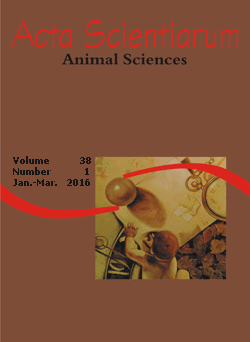<b>Performance of Africanized honeybee colonies settled by queens selected for different traits
Abstract
We evaluated varroa infestation and the performance of Africanized honeybee colonies with queens selected for honey and royal jelly production, and also unselected queens, correlating with climatic variables. In Campo Alegre, Santa Catarina State, Brazil, the experiment I used 10 Langstroth hives and in Mafra, Santa Catarina State, Brazil, the experiment II was performed with 15 Schenk hives. A mapping in areas of sealed and unsealed brood, honey and pollen was carried out on days zero, 45 and 90 days after the introduction of the queen. In the experiment I, there was interaction between the type of queen selection and the evaluation period for areas of sealed brood, honey, and total stored food. The group selected for royal jelly production presented larger sealed brood area and smaller honey area at 90 days. Varroa infestation was lower (p < 0.05) at 90 days. The type of queen selection and the evaluation period influenced the sealed brood area, the total brood and the total area occupied in the colony. The high relative humidity caused greater honey storage for the local group. The different groups of queens presented different behavior according to the environment in which they are settled.
Downloads
DECLARATION OF ORIGINALITY AND COPYRIGHTS
- I Declare that current article is original and has not been submitted for publication, in part or in whole, to any other national or international journal.
The copyrights belong exclusively to the authors. Published content is licensed under Creative Commons Attribution 4.0 (CC BY 4.0) guidelines, which allows sharing (copy and distribution of the material in any medium or format) and adaptation (remix, transform, and build upon the material) for any purpose, even commercially, under the terms of attribution.
Read this link for further information on how to use CC BY 4.0 properly.








































